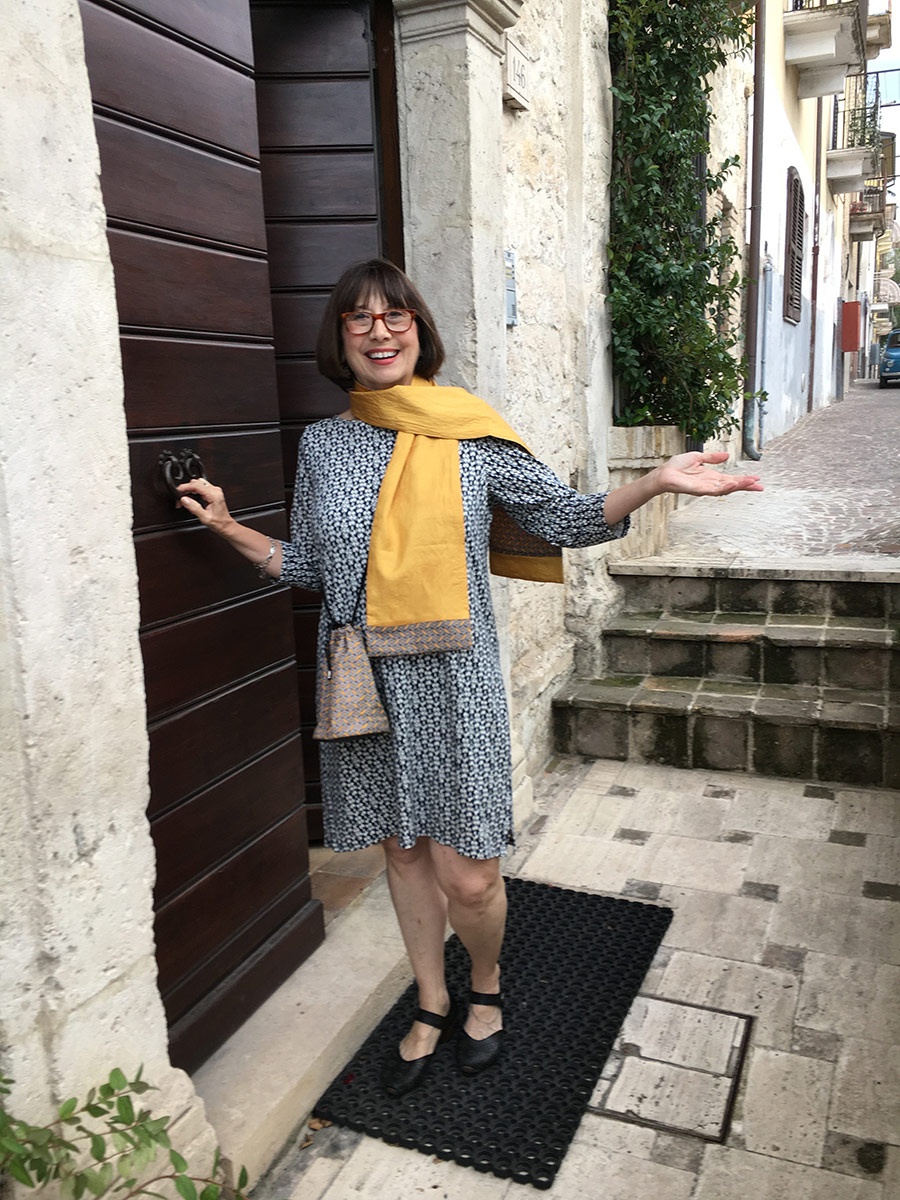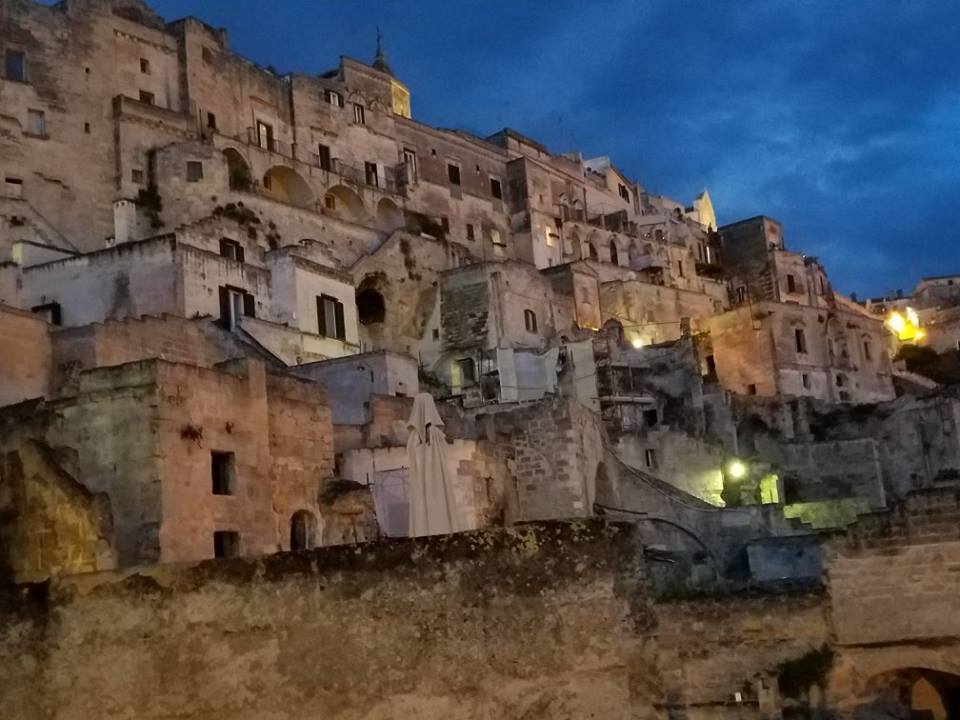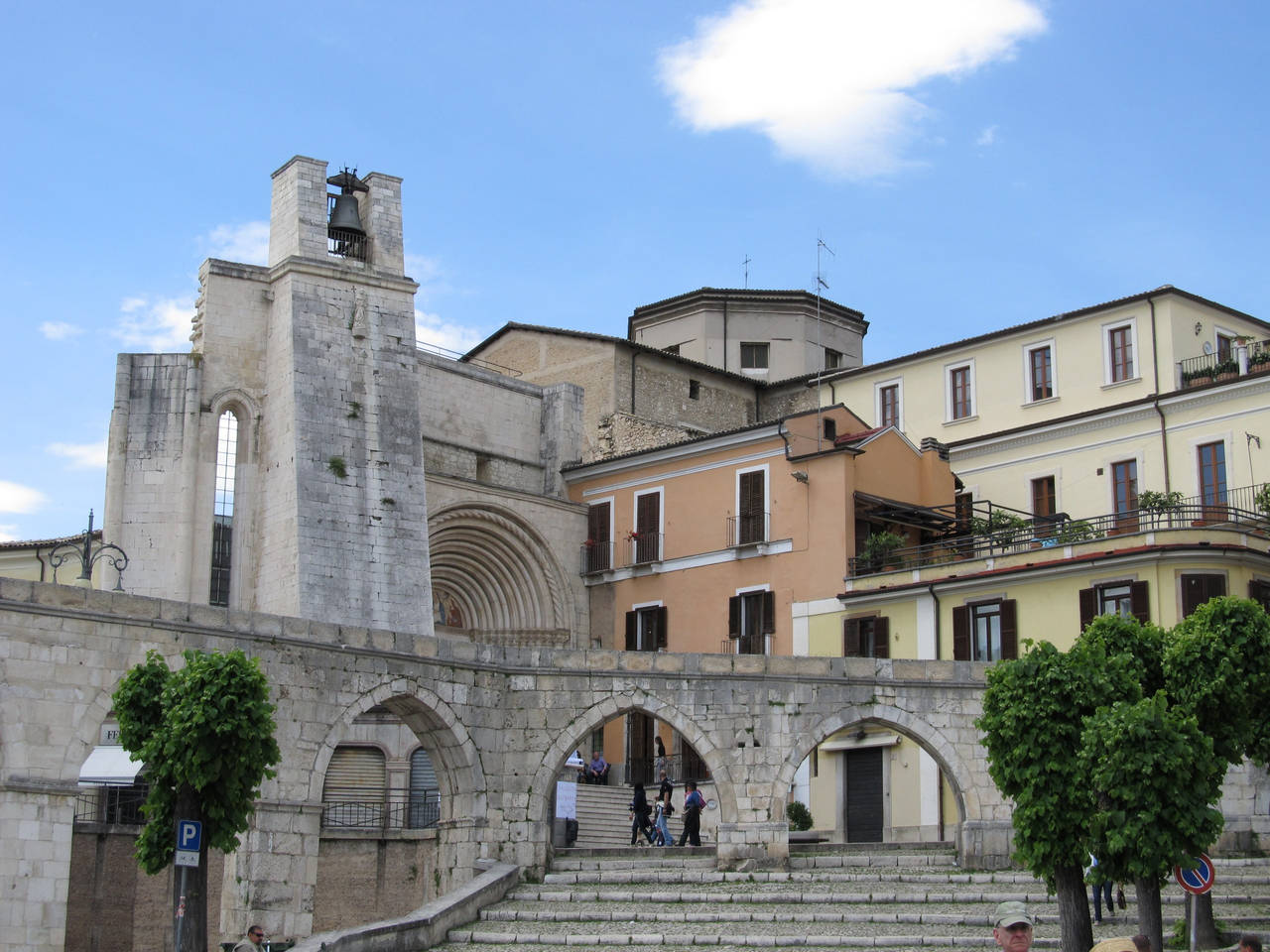San Francisco is a city where people are never more abroad than when they are at home. — Benjamin F. Taylor
Our first day in San Francisco was pretty typical for us. Since I know how Tim likes to follow his nose, and since there were two things that I absolutely, positively wanted to see, I suggested that we do those on Day One. Then I didn’t really care how the rest of the week unfolded; it would all be an adventure.
So what were these “must-sees”? Well, I guess it’s all that traveling to Europe, but I had to make a pilgrimage to Grace Cathedral. It was only a few walkable blocks from the hotel where we were staying, and struck quite a pose against the city skyline, so I had to take a look. I also knew that there was an active AIDS Interfaith Chapel inside, so I wanted to go and see what that was all about. Stop Two? Had to be North Beach, the city’s Italian-Beatnik enclave that’s a natural for any self-respecting writer of Italian background to have on her list. So off we went . . .
Grace Cathedral
A house of prayer for all people, without exception
Nestled between California and Sacramento Streets, off Taylor, sits Grace Cathedral, the country’s third largest Episcopal cathedral. Sitting on the site of railroad baron and banker Charles Crocker’s Nob Hill mansion (which was destroyed in the unpleasantness of 1906), the Cathedral is cleverly built of concrete and steel, despite its Gothic look, and was designed to stand up to the city’s seismic fluctuations. So far, so good . . .
The original Grace church, built in 1849, sat on the corner of California and Stockton Streets and was destroyed in the earthquake; Crocker gave his land for the construction of a new cathedral when his own house succumbed. Work on the cathedral, designed by Lewis Hobart, began in 1928 and was completed in 1964. Inspired by Notre Dame in Paris — with an interior Chapel of Grace that looks a lot like Sainte Chapelle — Grace Cathedral is an impressive structure, even by European standards.
The belfry’s 44 bronze bells — one of which tolls on the hour —and 25-foot Rose Window are astonishing. And the cathedral’s 7,500-pipe Aoelian Skinner organ is one of the largest in the country. The stained glass is staggering here, even the 20th Century windows, which depict notables like John Glenn and Albert Einstein. In the entryway, San Franciscan sculptor Beniamino (Benny) Bufano’s larger-than-life statue of St. Francis of Assisi offers a smooth and pleasing welcome.
The front doors are bronze and gold plated replicas of Lorenzo Ghiberti’s Doors of Paradise (also called Gates of Paradise), considered to be the first and greatest masterpiece of the Italian Renaissance. The Florentine sculptor’s originals were, of course, made for the Baptistery of the Duomo in Florence and tell the story of the Old and New Testaments. The doors of Grace Cathedral were actually struck from the very same molds used for the originals. Look closely and you’ll see the stories of Creation, the Flood, Moses receiving the Law, David and Goliath and more.
The midday sun reflected wildly off the doors as we stood outside talking with a very generous Rick Felton, Interim Director of Development for the Cathedral. He gave us an enormous amount of time, talking about the state of things in the city and at Grace, and gave us a real back-stage tour of the incredible building. Standing on the balcony, overlooking the sanctuary, is a breathtaking experience I’ll never forget. And off the side of the rear balcony — on the second level of the bell tower —was the entrance to the cathedral’s Columbarium, which was closed that day, but Rick granted us a tour, anyway.
The Columbarium offers an alternative to in-ground internment within the consecrated Chapel of Saint Francis as well as a relevant way to earn income for the cathedral. Here’s the idea: Historically, many churches have laid their dead to rest in churchyards or within their walls (think Westminster Abbey). The Columbarium — derived from the Latin word columba, meaning dove) — offers a place of perpetual rest and care for the cremated remains of the sons and daughters of Grace Cathedral. Ashes are stored in a sealed bronze urn that is placed permanently in the Columbarium and a bronze plaque on the door identifies the remains. Commital service and quarterly requiem services are offered, and who knew I’d get so excited about an indoor cemetery? I don’t know. It just seems like a good idea for both the living and the dead. Moving on . . .
One of my favorite things about Grace Cathedral was the presence of not one, but two labyrinths — one outside and one inside. The labyrinth, an ancient pattern with no dead ends (unlike a maze), is walked today to “quiet the mind, find balance and encourage meditation, insight and creativity.” The outside one is available 24/7 for walking and contemplation. The indoor one is open during cathedral hours except during special events. I prayed my first labyrinth inside and am happy to report that I did not dizzy myself into a fall, which looked like a real possibility on a few turns. So much for achieving balance.
And then there was the AIDS Interfaith Chapel. Dedicated in 2000 as a memorial to the nearly 20,000 San Franciscans who have died of AIDS, this chapel is a place of “meditation, healing and remembrance for caregivers and those who are still fighting against the disease.”
The centerpiece of the Chapel is a bronze and gold triptych altarpiece by artist Keith Haring (called The Life of Christ) which was completed just weeks before his own death of AIDS in 1990. On either side of the triptych are symbols of the world’s religions, including Christianity, Judaism, Islam, Shinto, Hinduism, Taoism, Jainism, Buddhism, indigenous faiths and all other faiths. A huge panel from the NAMES project hangs across the small chapel. And although this is a very Catholic thing to do, and although I am not even an Episcopalian, I went over and lit a candle for the friends I have lost, the ones still fighting and the ones who are looking out for them. And then I had to walk out into the sunshine.
North Beach
From the Cathedral, we walked over to North Beach, heading for ethnicity and lunch. I wanted to take Tim up Columbus Avenue to all things Italian and then make my requisite trip to City Lights Bookstore and Vesuvio Café.
We marched through Chinatown with its windows full of food and things that I assume are food but wouldn’t want put on a plate in front of me, and marveled at the hustle and bustle on the streets. We might as well have been in Beijing: street signs, temple-edged buildings and gates — all Chinese. I must say we were getting very hungry and pretty temped to stop for lunch in Chinatown, but we soldiered on and made our way to the Italian section before long.
There are so many choices. Touristy (but still good) places like The Stinking Rose and Caffe Trieste — which allegedly served the first cup of espresso on the West Coast in the 1950s —still offer better than average food and beverage experiences. And as we walked up Columbus Avenue and crossed Broadway (the scene of many a naughty piece of business in the 1960s and 1970s), we started to get confused. I was leaning towards the Sicilian Trattoria Pinocchio, well-known in the guidebooks and no doubt very good. But then Tim found one of his gems. A little place called L’Osteria del Forno at 519 Columbus Avenue. We walked in.
Family-run Osteria del Forno is a storefront affair, with maybe ten tables in sight. Our server, Ormenia, came from a town near Torino in the Piemonte region in the north. She brought us a basket of arguably the best focaccia ever and then made some recommendations for our lunch. I kept it light: a very nice salad and a huge slice of funghi pizza, which was just right. Tim shared my salad and had a lamb dish that he said was to die for. A carafe of pinot grigio and we were happy people. We even had espresso to fortify us for the next stop.
Walking the block or two back to Broadway and Columbus, we climbed into the historic space that is City Lights Booksellers & Publishers. City Lights has a long and fabled past. Founded in 1953 by poet Lawrence Ferlinghetti, City Lights has been home to the beats, the protest poets, out of sorts academics, out of work writers, myriad creative types and creative wanna-bes and general vagabonds of all kinds who flock to the store to reside a while amongst its narrow aisles. But make no mistake: City Lights is not just an historical stop on the Beat Nostalgia trail. Not just a literary landmark. It is a vibrant and important independent bookstore, totally tuned into the 21st Century and very much a home for a new generation of readers and writers. And if you’re lucky (I was, a few years ago), you can still see Ferlinghetti himself up in the Poetry Room or replenishing shelves. I was gob-smacked.
But the importance of City Lights goes far beyond being just another groovy bookstore. In 1955, Ferlinghetti launched the Pocket Poets Series, most notable for the publication of Allen Ginsberg’s masterpiece, Howl, which resulted in an obscenity charge. Other poets in the series include Jack Kerouc, Denise Levertov, William Carlos Willams and Ferlinghetti himself, among many others. Today City Lights Books has nearly 200 titles in print, and has moved beyond poetry to include cutting-edge fiction, memoirs, literary translations and books on important social and political issues.
Across Jack Kerouc Alley lies Vesuvio, the dark and historic watering hole that was home to the Beats and the Hippies and tries to continue its counterculture tradition, despite the TV in the bar and the too-fresh-face-looking bar staff. No matter. We enjoyed a chance to sit and rest before our walk back down to the hotel.
Vesuvio opened in 1948 and remains a monument to jazz, poetry, art and all things Beat. Today it attracts a diverse clientele, as reported on the saloon’s website, including “artists, chess players, cab drivers, seamen and business people, European visitors, off-duty exotic dancers and bon vivants from all walks of life.” So we added to that diversity, I guess. I had a boring Campari and soda and Tim had a beer and we sat amongst the decoupaged walls, weird stained glass windows and psychedelic décor wondering what the hell we were doing there.
Finally, we headed back to the hotel, but not before stopping at Molinari & Sons. Established in 1896, Molinari offers an incredible array of Italian salumi, cheese, bread, fresh salads, olives and so on. Certainly enough to make a dinner out of, which we did. Cans of olive oil were piled to the ceiling, as were cartons of wine from every region of Italy. We got a little bread (un po di pane), a little gorgonzola (no translation needed) and a little sopresatta, a dry-cured salami, and then Franco helped us out with a little wine. All we needed. We staggered back to the room after a very full, very rewarding first day and collapsed before 9:00. My feet were already killing me.
Now that’s what I call a vacation!
Buon viaggio!

Linda Dini Jenkins is a card-carrying Italophile, travel planner, freelance writer, and amateur photographer. Travel is her passion, so writing about her travels just comes naturally. She hopes all her travelers find a way to express their joys, surprises, and fears as they travel and gives every traveler a nifty journal to help smooth the way. Learn more…








































Recent Comments